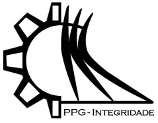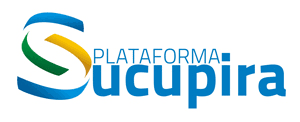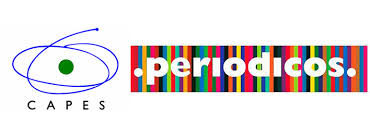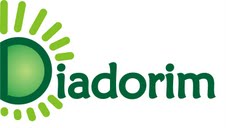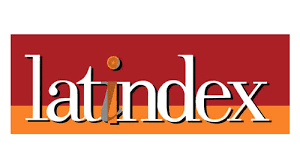ANÁLISE NÃO-LINEAR DE PÓRTICOS PLANOS USANDO UM ELEMENTO DE VIGA COROTACIONAL
DOI:
https://doi.org/10.26512/ripe.v2i22.20872Keywords:
Elemento de viga Bernoulli/Timoshenko. Formulação corotacional. Modos de deformação naturais.Abstract
Nesta pesquisa, é descrita a formulação corotacional de um elemento de viga unificado que engloba as teorias de vigas de Euler-Bernoulli e de Timoshenko, e que não apresenta bloqueio por deformação a corte. A cinemática corotacional se baseia na separação do movimento de um sólido em uma parte deformacional, e em outra, de corpo rígido. O movimento deformacional do elemento é descrito pelos modos naturais de deformação que são gerados pelos esforços axial, flexão pura e flexão simples, respectivamente. Os esforços internos gerados pelos modos de deformação naturais são autoequilibrados, o que permite obter uma matriz de rigidez tangente consistente. Neste trabalho é descrito, de forma detalhada, a obtenção das matrizes de rigidez elástica, geométrica e corotacional. Por meio de alguns exemplos numéricos, é demonstrada a habilidade do elemento em lidar com grandes rotações de corpo rígido.
References
Argyris, J., H. Balmer e J. Doltsinis (1979). “Finite element method - The natural approach”.
Em: Computer Meth. Appl. Mech. Engrg. 17/18, pp. 1”“106.
Battini, J.M. (2002). “Co-rotational beam elements in instability problems”. Tese de doutorado.
Stockholm / Sweeden: Royal Institute of Tecnology-Departament of Mechanics, p. 180.
Bergan, P. G. (1980). “Solution algorithms for non-linear structural problems”. Em: Computers
& Structures 12, pp. 497”“509.
Bergan, P.G. et al (1978). “Solution techniques for non-linear finite element problems”. Em:
Int. J. Numer. Methods Eng. 12, pp. 1677”“1696.
Crisfield, M.A. (1981). “A fast incremental/iterative solution procedure that handles "snapthrough"”.
Em: Computers & Structures 13, pp. 55”“62.
Da Deppo, D. A. e R. Schmidt (1975). “Instability of Clamped-Hinged Circular Arches Subjected
to a Point Load”. Em: Trans. ASME, pp. 894”“896.
Felippa, C. A. e B. Haugen (2005). “A unified formulation of small-strain corotational finite
elements: I. Theory”. Em: Comput. Methods Appl. Mech. Engrg 194, pp. 2285”“2335.
Fujii, F. (1989). “Scheme for elasticas with snap-back and looping”. Em: J. Eng. Mech. Div.
ASCE 115, pp. 2166”“2181.
Krenk, S. (2009). Nonlinear Modeling and Analysis of Solids and Structures. Cambridge University
Press.
Lee, S. L., Manuel F. S. e E. C. Rossow (1968). “Large deflection analysis and stability of elastic
frames”. Em: J. Eng. Mech. Div. ASCE 94 EM2, pp. 521”“547.
Matias, W. T., A. A. Cunha e M. P. D. Gutierrez (2015). “Obtenção de um elemento de viga
unificado utilizando o princípio dos trabalhos virtuais complementares”. Em: XXXVI Ibero
Latin-American Congress on Computational Methods in Engineering 1, pp. 1”“17.
”“ (2016). “Análisis no lineal de pórticos planos usando la formulación corrotacional con elemento
de viga Timoshenko”. Em: int. métodos numé. cálc. diseño ing. 32.
Reddy, N. (2006). An introduction to the Finite Element Method. 3a ed. Vol. 3. McGraw-Hill,
p. 761.
Schweizerhof, K. e P. Wriggers (1986). “Consistent linearization for path following methods in
nonlinear F.E. Analysis”. Em: Computer Meth. Appl. Mech. Engrg. 59, pp. 261”“279.
Silva, S. S. (2011). “Análise não linear de pórticos planos utilizando uma formulação corotacional
e plasticidade por camadas”. Diss. de mestrado. Brasil: Universidade de Brasília,
p. 164.
Simo, J. C. e L. Vu-Quoc (1986). “A three-dimensional finite-strain rod model. Part II: computation
aspects”. Em: Computer Methods in Applied Mechanics and Engineering 58, pp. 79”“
Wood, R.D. e O.C. Zienkiewicz (1977). “Geometrically nonlinear finite element analysis of
beams, frames, arches and axisymmetric shells”. Em: Computers & Structures 7, pp. 725”“
Downloads
Published
Issue
Section
License
Given the public access policy of the journal, the use of the published texts is free, with the obligation of recognizing the original authorship and the first publication in this journal. The authors of the published contributions are entirely and exclusively responsible for their contents.
1. The authors authorize the publication of the article in this journal.
2. The authors guarantee that the contribution is original, and take full responsibility for its content in case of impugnation by third parties.
3. The authors guarantee that the contribution is not under evaluation in another journal.
4. The authors keep the copyright and convey to the journal the right of first publication, the work being licensed under a Creative Commons Attribution License-BY.
5. The authors are allowed and stimulated to publicize and distribute their work on-line after the publication in the journal.
6. The authors of the approved works authorize the journal to distribute their content, after publication, for reproduction in content indexes, virtual libraries and similars.
7. The editors reserve the right to make adjustments to the text and to adequate the article to the editorial rules of the journal.


